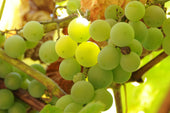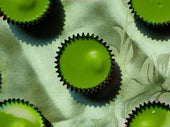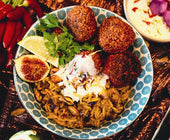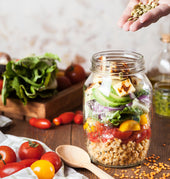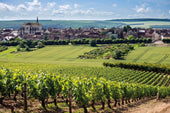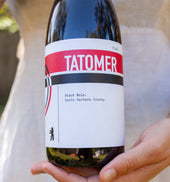
Dijon Duck Breast

Is the cold weather making you crave some delicious duck? We've got you covered with this recipe for Dijon Duck Breast. Duck is a popular meat in many cultures and is often overlooked here in the US. It has a flavor profile much more complex than chicken or turkey and leans a bit towards steak in texture. Rendered fat from cooking duck also makes for fantastic cooking grease. To keep this dish casual and tasty, we've sauteéd root vegetables to serve along side. Typically you will want to pair Duck with red wine, however you have mustard sauce, which needs a wine with some matching acidity. You'll want to pair this Burgundian inspired sauce with a light to medium bodied Pinot Noir from Burgundy or Oregon.
Ingredients:
- 1 per person Duck Breasts
- 1/3 cup White Wine
- 1/3 cup Heavy Cream
- 1 tbsp Dijon Mustard
- 1 tbsp Butter
- 2 tbsp Minced Shallots
- Salt & Pepper to taste
- 1 Turnip
- 1 Large Carrot
- Rendered Duck Fat (from the cooking process)
- a few Juniper Berries
- 1 tbsp Pink Peppercorns
- Preheat oven to 200°F.
- Remove the duck breast from packaging. Let the lobes come to room temperature. Thaw the night before in the fridge if necessary.
- Get a pan large enough to hold the amount of duck you are preparing and make sure it is non reactive (o
ven proof). - Take your breasts (sk
in side up) and score them gently in 2 directions so it looks like a diamond pattern. Go just as deep as the meat. At this time, salt and pepper them to taste. - Place the duck in a fry pan skin side down, that accommodates all of the pieces. Starting with your burner on low. Don't freak beca
use great things start to happen right now. That very fleshy breast starts to render its fat, much like bacon does when you fry it. DO NOT TOUCH the breast for at least 5 minutes. I realize it's tempting and you want to touch it, but just let it simmer gently in the rendered fat that is coming from the breasts. - After 5 minutes or so, lift up a corner of the breast and check for desired doneness and crispness of the skin. Start to retrieve the fat from the pan with a spoon into a container while the breast continues to crisp. Strain and reserve this duck fat. Cook the breasts for 23 more minutes before flipping.
- Flip the breasts once the skin is golden brown. Cook for 2 more minutes then put into the oven making sure all the rendered fat has been removed and saved. If your pan is reactive (not suitable for the oven), transfer the meat to a pan and cook in the oven.
- Check the meat after 5 minutes. You are trying to achieve medium rare like a steak. It should be slightly springy when you press your finger into the meat. If done, remove the pan from the oven and tent it with foil while it rests.
- While the breasts are resting, prepare your sauce topping. Fruit sauces or chutneys are traditional. For the Dijon sauce pictured, sauteé the minced shallots in butter till they are soft.
- Add the white wine and reduce by half over medium heat.
- Add the heavy cream, simmering until thickened.
- Lastly, add a tablespoon of quality dijon mustard and salt and paper to taste. Whisk the sauce until thick.
- If it becomes too thick, cut the sauce with a bit more white wine.
Cooking the Glazed Turnips:
- Peel the turnip and carrot. Cut the turnip into a french fry shape and Julianne the carrot.
- Sauteé these in some duck fat with the juniper berries, pink peppercorns and salt and pepper to taste.








